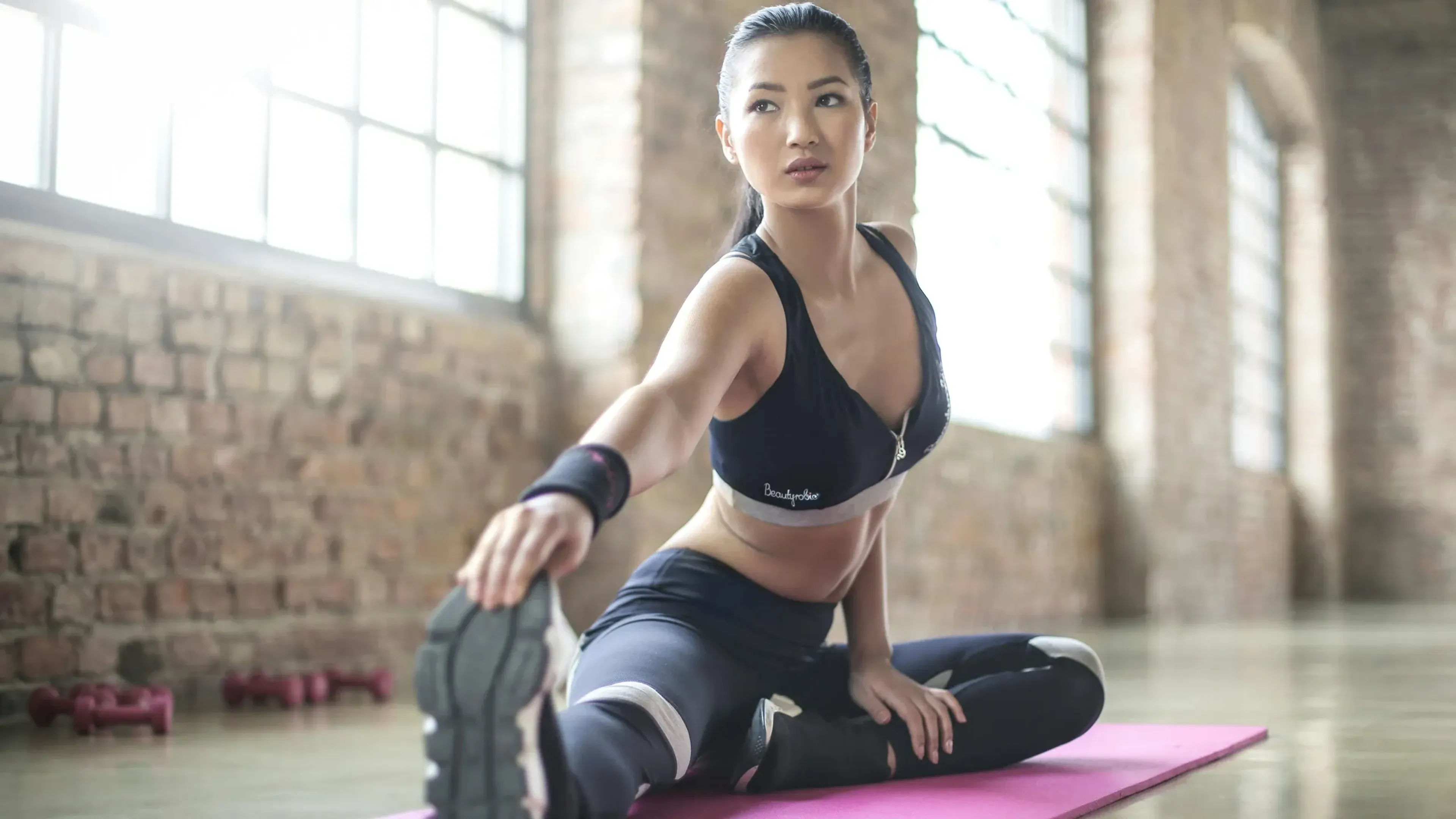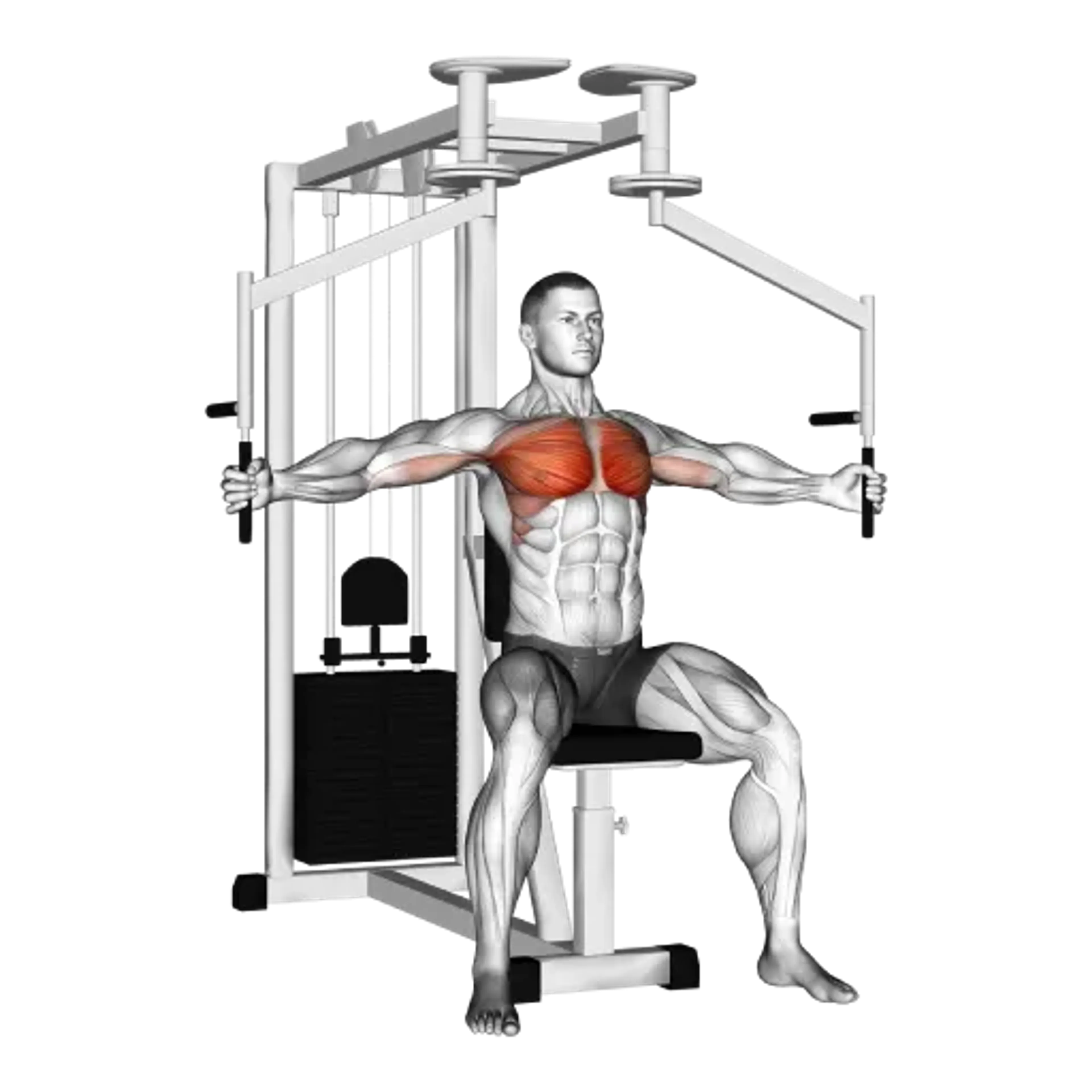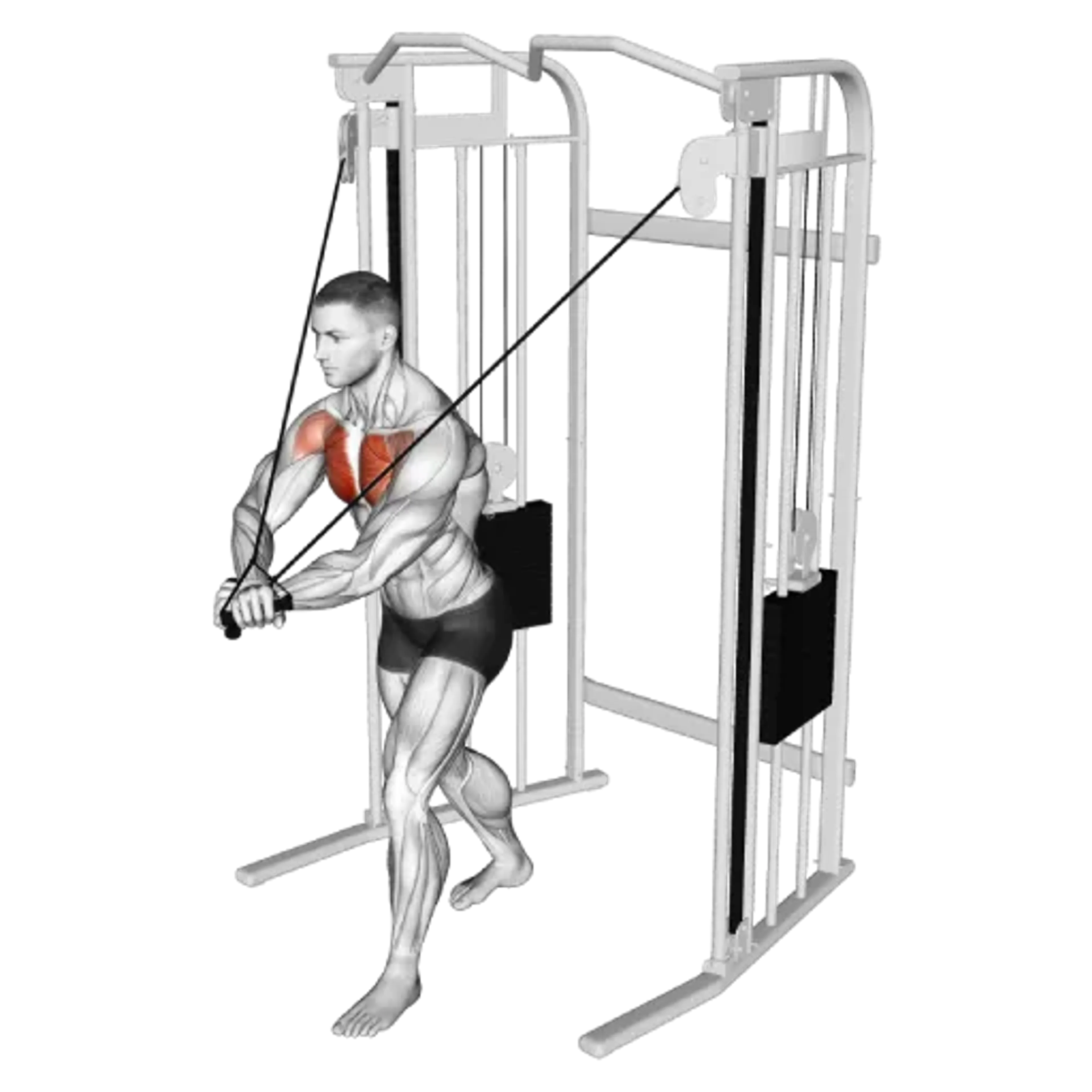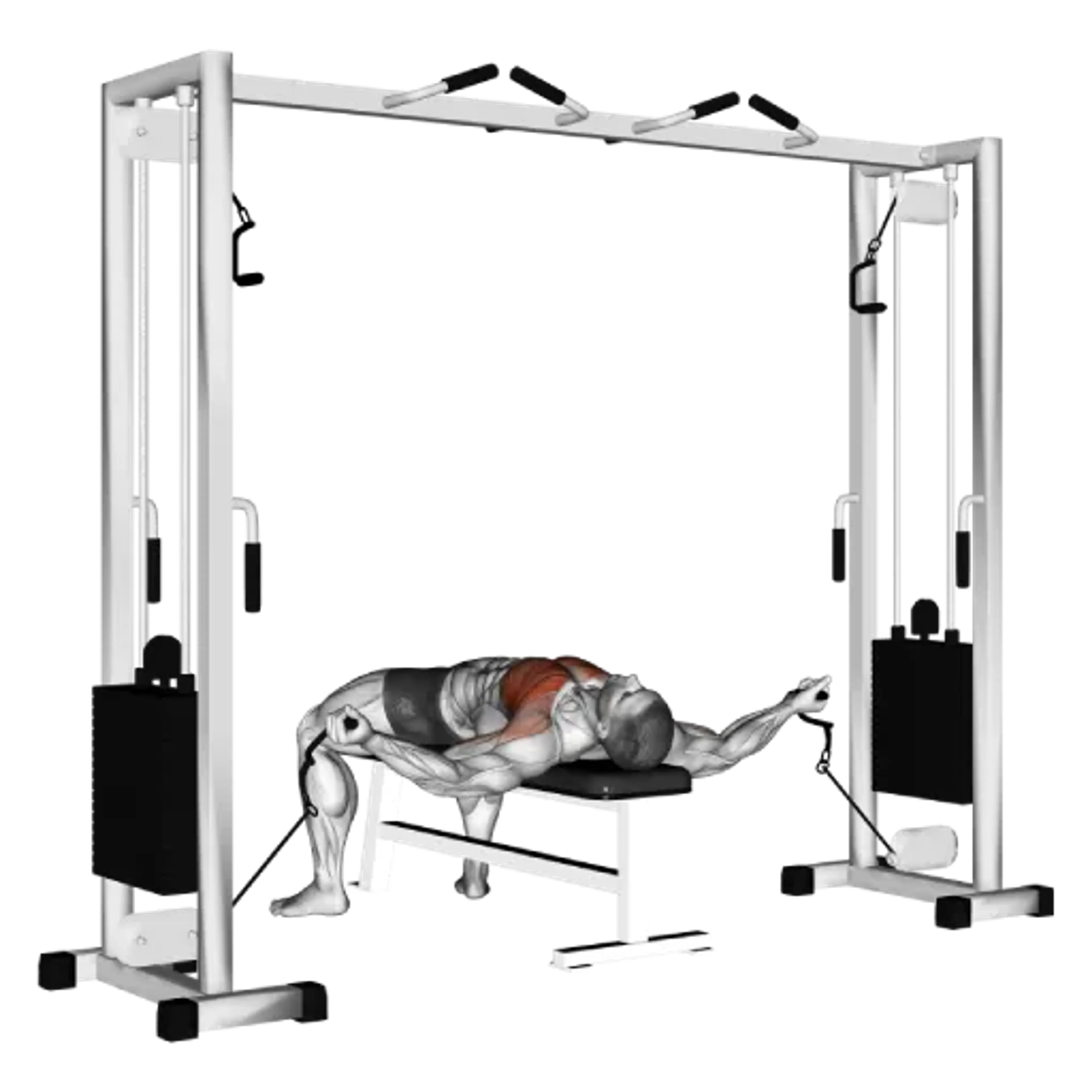Dumbbell Incline Fly

Overview
- Primary Focus:
- Chest.
- Equipment:
- Dumbbell and bench.
- Difficulty:
- Intermediate.
General Information
Dumbbell Incline Fly is an isolation exercise that primarily targets the upper portion of the chest (pectoralis major), with secondary involvement of the front shoulders (anterior deltoids) and biceps brachii. It is a beginner-level movement often used to build upper chest size and definition.
This exercise is performed on an incline bench, which shifts more load toward the clavicular head of the chest muscles. By using dumbbells and keeping your arms in a wide arc, you isolate the chest through a deep stretch and controlled contraction.
Dumbbell incline flys are best performed with moderate weight and slow, controlled motion. They are commonly used in hypertrophy programs to shape and develop the chest, especially the upper region that can be under-stimulated by flat or decline pressing movements.
Muscles Worked
- Pectoralis Major
- Primary
- Deltoid
- High
- Serratus Anterior
- Medium
- Biceps Brachii
- Low
Instructions
- Set a bench to an incline angle of 30–45 degrees and sit back with a dumbbell in each hand.
- Start with your arms extended above your chest, palms facing each other, and a slight bend in your elbows.
- Slowly lower the dumbbells in a wide arc until they are level with your chest or slightly lower, feeling a deep stretch.
- Keep your elbows fixed in position and avoid rotating your shoulders excessively.
- Engage your chest muscles to bring the dumbbells back to the starting position in the same arc.
- Pause briefly at the top and repeat for the desired number of reps.
Common Mistakes
Injuries
Dumbbell Incline Fly is a low to medium risk exercise when performed with proper form.
The most common risk is shoulder strain, especially if the dumbbells are lowered too far or if the form breaks down. To minimize risk, avoid going too deep and maintain a slight bend in the elbows throughout the movement.
Wrist discomfort can also occur if the dumbbells are not held firmly or if wrist positioning is poor. Keeping the wrists neutral and aligned with the forearms helps prevent this.
Finally, elbow joint stress may arise from using weights that are too heavy. Choose a weight that allows you to maintain full control and focus on a smooth, controlled motion.
Alternative Exercises

Frequently Asked Questions
- Q: Can I do this exercise with cables instead of dumbbells?
Yes, cable incline flys are a good variation and provide constant tension throughout the movement.
- Q: How heavy should the dumbbells be for incline flys?
Use light to moderate weights that allow a full range of motion with good control.
- Q: Is incline fly better than incline press?
Incline flys isolate the chest more, while incline presses allow heavier loads and involve more supporting muscles.
Overview
- Primary Focus:
- Chest.
- Equipment:
- Dumbbell and bench.
- Difficulty:
- Intermediate.




